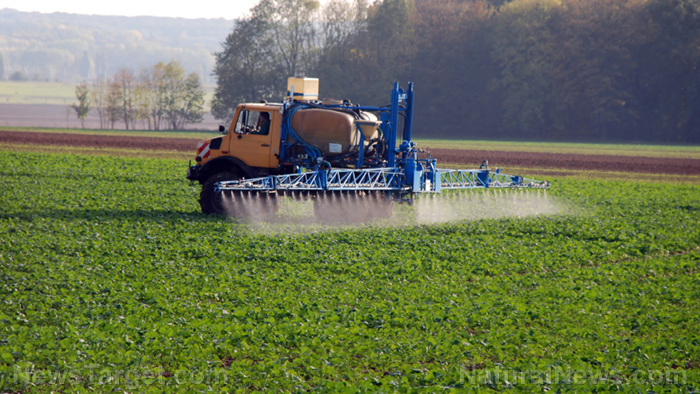Your house dust is full of chemicals – here’s how to eliminate the threat without resorting to more chemicals
04/28/2018 / By Jessica Dolores

Modern-day pollution is making dust a part of our lives. It’s in the air we breathe, and in the place where we spend the biggest part of our lives in — at home. That’s why it’s alarming to learn that indoor dust found in the typical U.S. household has around 45 harmful endocrine-disrupting chemicals, including flame retardants and phthalates, which are related to weight gain, obesity, thyroid issues, cognitive impairment, and even cancer.
According to the Environmental Working Group (EWG), items inside your house ‘shed’ chemicals over time. These include shoes, food and chemicals released from cooking, plastics, stain-resistant furniture, electronics, and flooring materials. Also in the list are fragrances, cosmetics, cleaning products and any other household items that have chemicals.
Here’s why household dust and chemicals form a lethal combination.
- They may cause thyroid dysfunction – The common household chemical perfluorooctanoic acid (PFOA) can enter our organs and tissues. Studies point to household dust as one of the main sources of PFOA. They also show that high PFOA levels in the blood may create thyroid problems and other hormonal imbalances. Worst, PFOA in the bloodstream may stay in the body for several years. PFOA is found in the carpet, flooring treated with wax, sealants, carpet stain remover, and non-stick cookware.
- They’re linked to fertility issues – Phthalates and PCBs (polychlorinated biphenyl) are two harmful chemicals that lodge themselves in dust. These substances can reduce sperm count and create reproductive problems in women. Phthalates are present in car interiors, vinyl shower curtains, vinyl wallpaper, and cosmetics. PCBs are found in oil-based paint, electrical equipment, plastic, and floor finish. Older homes usually house PCBs, which was banned in late 1979. Like PFOA, phthalates and PCBs take a long time to break down, and can stay in your organs and tissues for years.
- They can trigger skin flare-ups – Bacteria and fungi in household dust can make their own type of chemicals. These chemicals cause allergies and have been been associated with skin problems like dermatitis and eczema.
- They can prevent cognitive development – Polybrominated diphenyl ethers (PBDEs), a flame retardant present in mattresses, computers, car stereos, and couch cushions, are associated with cognitive impairment and neurobehavioral issues in children. According to studies, a whopping 80 percent of our exposure to PBDE comes from household dust.
Babies and toddlers are at greatest risk when it comes to household dust because they crawl on the floor, play with toys stored in bins and put their hands in their mouths. These make it easier for PBDEs in dust to enter their underdeveloped bodies.
Here’s how you can conquer perils of household dust:
- Use organic and natural products at home – Go organic when choosing cosmetics, personal care products, flammable materials, and household cleaning items. Try using coconut oil as moisturizer; essential oils instead of fragrances; and water, lemon juice, white vinegar, and antibacterial essential oils as household cleansers.
- Use HEPA (High Efficiency Particulate Air) filter to vacuum – You can attach this filter to your vacuum cleaner to trap dust and other pollutants like mold, tobacco smoke, and pollen. HEPA filters are better than the regular vacuum variety because the former traps microscopic particles that the latter can’t get rid of.
- Clean surfaces with damp cloth – Feather dusters can spread the dust even more. So use damp cloth or a microfiber duster or electrostatic cloth instead.
- Wash hands with chemical-free soap and water before eating – This is one of the easiest ways to fight toxins you and your family are exposed to every day.
Household dust and chemicals are enemies to health that live with us every day. Beating these harmful substances a sign that we care for the loved ones who live with us at home. Read Toxins.news for more coverage of environmental toxins that directly impact your health.
Sources include:
Tagged Under: air filters, air quality, clean home, Flame Retardant, household chemicals, household dust, indoor air, PBDEs, PCBs, perfluorooctanoic acid, PFOA, phthalates, Polybrominated diphenyl ethers, polychlorinated biphenyl, toxins




















